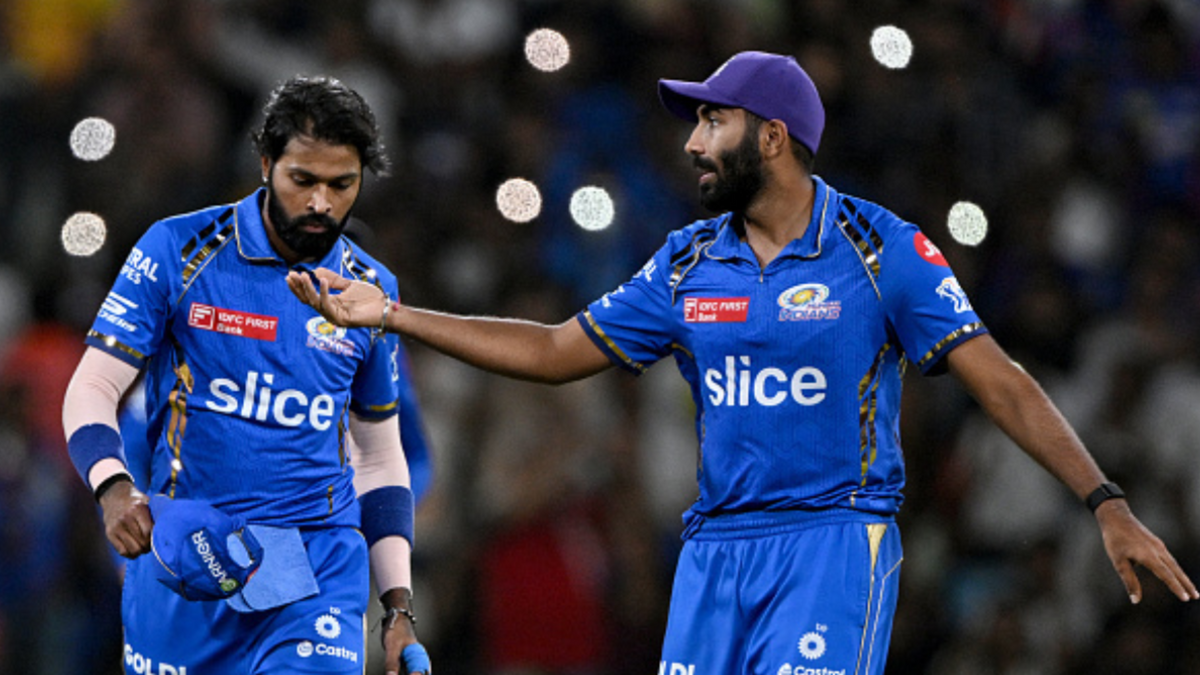
The Indian Premier League’s recent innovation, the Impact Player rule, has divided the cricketing world as big scores and even bigger run chases have become routine. Sarah Waris looks at a few more inventions that could add intrigue to the IPL.
Subscribe to the Wisden Cricket YouTube channel for post-match analysis, player interviews, and much more.
One bowler allowed a maximum of five overs
Four years ago, Shane Warne suggested a change to favour bowlers, requesting that they be allowed to bowl at least an over more in T20Is. Letting every bowler in the XI have an opportunity to send down at least five overs might not work for several reasons. Instead of helping bring more balance to the game, teams would then have the liberty to play another specialist batter in the XI, which would only lead to higher scores even against the best bowlers.
The alternative is that one bowler bowls five overs per game. This will bring more excitement as batters will need to take more risks against that particular bowler. Currently, batters often look to play out the opposition’s best bowler but with this innovation, caution almost becomes riskier, with his spell constituting 25 per cent of the innings. This will also give more flexibility to the fielding captains as they will have more scope to use their resources judiciously.
Allowing one extra fielder outside the circle in the death overs
After the end of the powerplay, a maximum of five fielders are allowed outside the 30-yard circle. That number should go up to six, especially in the IPL, where the presence of the Impact Player has dulled fear in the batter’s mind. While the batting side has benefitted tremendously, little has been done to give an equal opportunity to the bowlers. Batters have started playing big shots more frequently and there should be a way to reign in the madness and having an additional fielder outside the circle at the death, which is when a team can run away with the game, could make the contest more engaging and re-balance the scales in the battle between bat and ball.
Making it mandatory to pick at least one Associate player in the squad
While cricket in India has grown exponentially, Associate countries have struggled to survive. While the BCCI, or the IPL, have no responsibility to ensure the game develops in other nations, it would be a huge boost to global cricket if they do. This could involve getting at least one player from an Associate country involved in each IPL squad. It would not only give the players some much-needed exposure but also allow franchises to expand their scouting horizons beyond a select few countries. This would, in turn, mean more competitive ICC tournaments in the long run, where players can feed off the experience of playing with and against the stars, passing off the knowledge to their teammates.
Opening trade windows during the season
There is an argument to be made about banning trading windows altogether in the IPL after the trade of Hardik Pandya arguably affected as many as three teams. But, mid-season trades, could be useful in helping a team revive their campaign, bringing in a missing link to their XI while exchanging a player they might not need. This would work especially well for youngsters, who would otherwise be on the bench because the team is covered in their skill-set, who could then secure crucial game time.
Two overs of powerplay to be decided by the bowling team
This is similar to the ‘power surge’ in the Big Bash League, where the batting side calls for a two-over period during which the fielding team is allowed only two players outside the 30-yard circle. The only innovation will be that fielding teams will be allowed to pick the second powerplay, the first one lasting four overs up top. The regulations would be the same, with only two fielders allowed outside the inner circle, but the flexibility of those final two powerplay overs will add another dimension to proceedings.
If a fielding team has picked up quick wickets in the middle overs, they can call for the second powerplay, which will force the new set of batters to bat more aggressively, not allowing them to get their eye in. This will also bring a technical nuance to the game, where teams will no longer blindly slog in the first six overs but will also need to brave the unexpected. If the batting team choose when they should use the second powerplay, they will mostly call for it when they are in a position of strength, and usually after the first four overs if they have gained momentum. The innovation will mean innings undergo different paces, making games more interesting.








